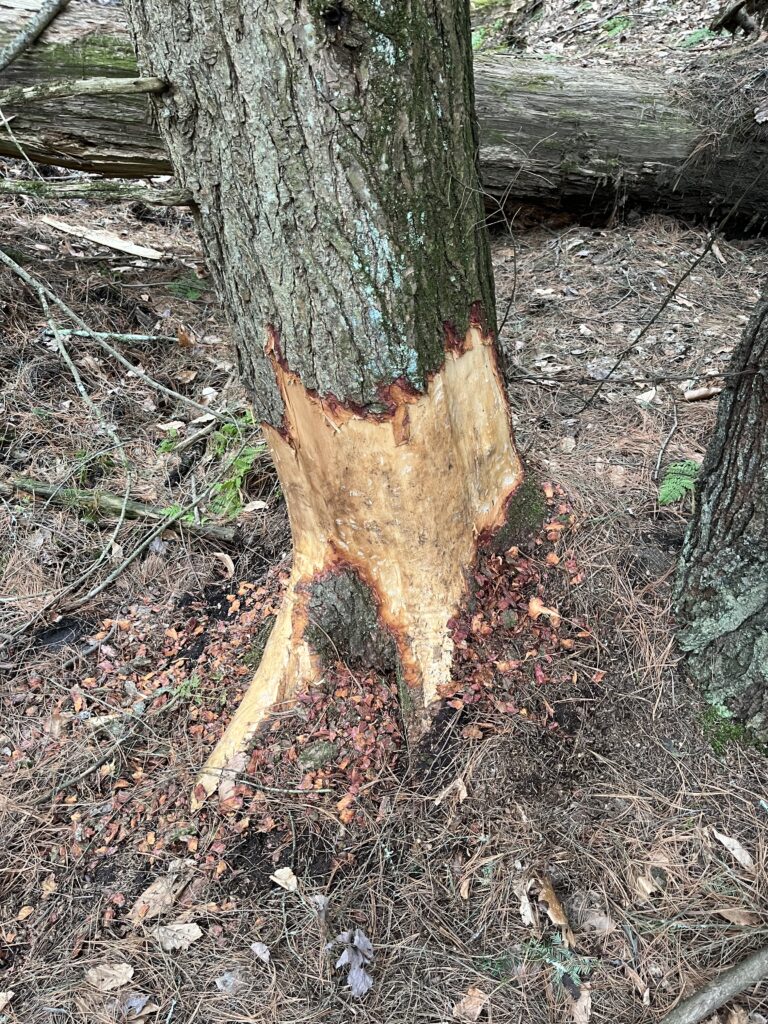The City Nature Challenge and the BioBlitz that it entailed made for an engaging time in Centennial Woods. I walked further than my phenology spot to the beaver pond—trying to tune my ears to the sounds of birds. After walking around the beaver pond I saw something slide into the water on the West side of the pond and saw a head waking before it dipped under the surface. Unless there are many muskrats in the area I am almost sure that this is the beaver (Castor Canadensis) that resides at the beaver pond. I was unable to capture the beaver on camera, but after walking to the Eastern edge of the pond saw the fresh evidence that what I saw was most likely the beaver.

As I walked to my phenology spot I kept special attention on Centennial Brook. I turned over some rocks and found a caddisfly larva (Pycnopsyche sp.) crawling on the bottom of one of the rocks.

I also identified some creek chubs from the bank of the brook, but they were moving far too fast to capture a quality picture. It has been interesting to observe the returning of the creek chubs to my phenology spot and Centennial Brook as a whole. I was unable to catch quality pictures of some of the birds that I saw during the City Nature Challenge. The species that I was able to identify included crows, sparrows, and hairy woodpeckers.
Using iNaturalist to identify species was easy if I was able get a picture that I could use. When there was any uncertainty and there was too many suggestions for the species it was hard to differentiate between closely related/similar appearing species. From class Chris and Walt concluded that Garlic Mustard was the most identified species in the world. This really shows the ability of this species to adapt and the danger that it poses to native species.
I think that the biodiversity that occurs in other parts of the world that participated in the City Nature Challenge was very interesting to observe. Places like South Africa seem to have so many different species that are so different than what we have here in Vermont. It is odd to think that people take species that we view as exotic as everyday animals.
